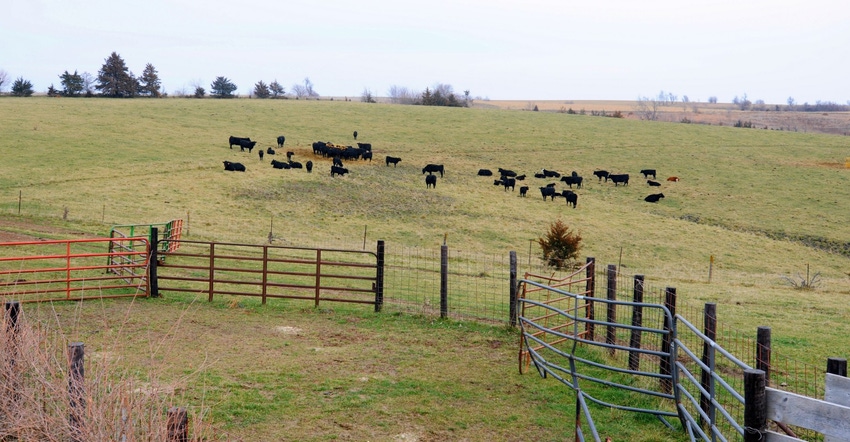April 15, 2019

USDA announced April 12 that Farm Service Agency offices in six Iowa counties are accepting applications from farmers for the Emergency Conservation Program to address damage due to flooding. Sign-up begins April 15.
The counties are Fremont, Harrison, Mills, Monona, Pottawattamie and Woodbury — all located along Iowa’s western edge where flooding of the Missouri River has caused widespread destruction this spring. ECP enrollment deadlines may vary by county; producers need to contact their local FSA office for more information.
The approved ECP practices under this authorization may include debris removal; fencing replacement and repair; grading, shaping and leveling of impacted fields; and conservation structure rehabilitation. For information on eligible practices, contact a local FSA county office.
ECP assists producers with the recovery cost to restore the agricultural land to pre-disaster conditions, says Amanda De Jong, state executive director for FSA in Iowa. Approved ECP applicants may receive up to 75% of the cost of approved restoration activity.
“Dealing with natural disasters is never easy, and the extreme weather we’ve had this spring is going to require we all work together to get farmland back in use,” she says. “ECP is one more tool producers can use on their road to recovery. It is important that producers contact their local FSA office before they take action to permanently repair damages to discuss their options. Producers with damage must apply for assistance prior to beginning reconstructive work to qualify for cost-share assistance.”
The use of ECP funds is limited to activities to return the land to the relative pre-disaster condition. Conservation concerns that were present on the land prior to the flooding are not eligible for ECP assistance.
“If you are located in one of these eligible counties and have questions or need more information, contact your county FSA office immediately,” De Jong says. To find your local FSA office go to offices.sc.egov.usda.gov/locator/app. Visit USDA's farmers.gov/recover to learn more about USDA disaster preparedness and response.
Emergency grazing on CRP acres
In another announcement, USDA said on April 10 that, effective immediately, emergency grazing use of Conservation Reserve Program acres is approved in Iowa through May 14. This is for all counties in the state, but participation is limited to livestock producers who lost pasture or fences due to flooding.
The authorization was granted to address the impacts of the recent extreme weather, including flooding. “By allowing emergency grazing, we expand the available resources to help Iowa producers respond to recent weather events,” De Jong says.
Producers who are interested in emergency grazing of CRP acres must request FSA county office approval before moving livestock onto the acres. Producers whose livestock grazing land was adversely impacted by the flood, must file a CCC-576 Notice of Loss or provide written certification of that loss. The request must include a modified conservation plan, with grazing provisions, from USDA’s Natural Resources Conservation Service.
CRP participants can allow other livestock producers to use their CRP acres for grazing under this emergency grazing authorization. However, these livestock owners will also need to complete FSA paperwork indicating their grazing land was adversely impacted by severe weather. There will be no reduction in CRP rental payments to CRP contract holders who use the emergency grazing authorization. CRP contract holders are not permitted to charge livestock producers for the emergency grazing option.
For more information on eligible practices or to request approval for emergency grazing use of CRP acres, contact your local FSA office or visit farmers.gov/service-locator.
Buyers for damaged grain
Also, USDA’s Risk Management Agency recently announced that a Damaged Grain Buyers list is available on the St. Paul Regional Office website. The St. Paul Office of RMA is providing this list of buyers of damaged grain that service Iowa, Minnesota or Wisconsin. The list isn’t complete and is provided as a guide to assist in locating salvage markets for grain stored in bins affected by flooding this spring.
It’s important to note for crop insurance purposes, coverage of the insurable crop ends at the earliest of total destruction of the crop, or harvest of the insured crop. Stored grain is not covered under the crop insurance policy. For more information on the insurance period, refer to the Common Crop Insurance Policy Basic Provisions.
Crop insurance is sold and delivered solely through private crop insurance agents. A list of crop insurance agents is available at all USDA Service Centers and online at the RMA Agent Locator. Farmers can use the RMA Cost Estimator to get an estimate of the premium they will have to pay to purchase crop insurance to meet their needs. For more information about crop insurance and the modern farm safety net, visit rma.usda.gov
About the Author(s)
You May Also Like






